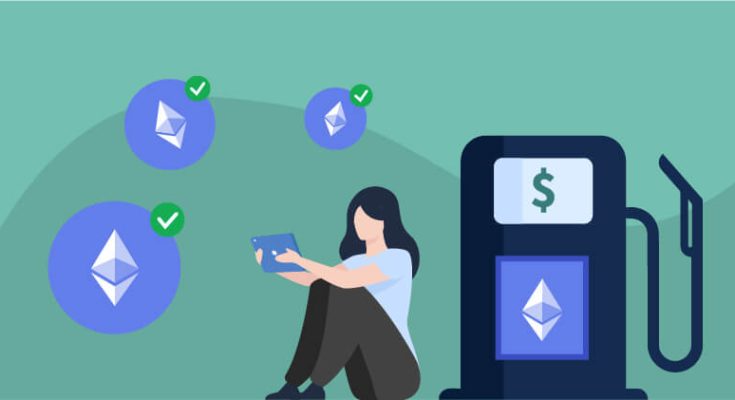One of the most persistent frustrations in decentralized finance (DeFi) is the complexity surrounding gas fees. For users operating across different blockchains, keeping track of native tokens required to cover transaction costs can be a real hassle. Whether you’re transacting on Ethereum, Binance Smart Chain, or any other network, ensuring you have the right token to pay gas fees often disrupts an otherwise seamless user experience.
Fortunately, innovative DeFi platforms now offer smart wallets with the ability to pay gas fees using any token—a feature that radically simplifies user interactions across multiple networks. This development not only makes DeFi more accessible but also aligns with the overarching vision of decentralization by removing friction from transactions.
The Problem with Traditional Gas Fees
Gas fees are essentially transaction fees that users must pay to miners or validators to execute operations on a blockchain. These fees vary across networks, with some, like Ethereum, being notoriously expensive during times of congestion. What’s more, each blockchain requires its own native token for gas fees—Ethereum requires ETH, Binance Smart Chain requires BNB, and so on.
This means that users interacting with multiple blockchains have to ensure they hold enough of each native token to cover fees. For active traders, yield farmers, or those using complex DeFi strategies like staking or liquidity provision, this can be a logistical nightmare. Not only does it require constantly swapping assets to acquire the right tokens, but it can also lead to missed opportunities or stalled transactions if fees aren’t adequately covered.
Smart wallets that allow users to pay gas fees using any token solve this problem by enabling transactions across multiple chains without worrying about native tokens for fees. This feature is a significant leap forward in making DeFi more user-friendly, efficient, and accessible to both new and experienced users.
How Paying Gas Fees with Any Token Works
Smart wallets offering this feature provide users with the ability to use any token they hold to cover gas fees, regardless of the blockchain they are operating on. For example, you could pay Ethereum gas fees using USDT or cover Binance Smart Chain transaction costs with LINK or any other asset in your wallet.
This is possible because the smart wallet dynamically converts the token being used into the native currency required for the transaction, at the point of execution. This seamless conversion process happens in the background, meaning users don’t have to manually swap tokens or calculate the right amount for fees.
For those managing a diversified portfolio across blockchains or engaging in various DeFi activities like leveraging yield farming or staking, this is an absolute game-changer. The wallet automatically handles the fee conversion, enabling users to focus on executing their strategies rather than managing a list of tokens for gas.
Enhanced Flexibility and Convenience
This ability to pay gas fees using any token significantly enhances the flexibility and convenience of interacting with DeFi protocols. Users no longer need to keep small balances of multiple tokens across different wallets just to cover transaction costs. Instead, they can consolidate their assets into their preferred tokens and let the smart wallet take care of the rest.
Imagine you’re actively participating in cross-chain swaps to take advantage of opportunities across various networks or you’re exploring risk-scored investments to balance your portfolio. In either case, having to halt your activity to acquire a specific token for gas fees can slow you down and introduce unnecessary complications. Smart wallets eliminate this friction, allowing for smooth and continuous DeFi engagement, whether you’re swapping, staking, or yield farming.
Simplifying Yield Farming and Aggregation
This feature becomes particularly valuable for users engaging in complex DeFi strategies like leveraged yield farming or using services offered by financial aggregators. Platforms that consolidate multiple financial services into one, such as those included in a list of financial aggregators, often require users to interact with several blockchains or protocols. Having to manage gas fees across each can be cumbersome.
With the option to use any token for fees, users can move in and out of yield farming pools or liquidity positions with ease. This becomes even more powerful when combined with cross-chain swaps. Imagine seamlessly moving funds between different blockchains without worrying about holding native tokens to cover transaction costs. The smart wallet does it all, unlocking a new level of efficiency for users maximizing their DeFi strategies.
Security and Ease of Use
Smart wallets that allow gas fee payments in any token also emphasize security. By functioning as self-custodial wallets, they give users complete control over their private keys and assets. This means that even as you enjoy the flexibility of using any token for fees, you retain the highest level of security, knowing that your assets are always under your control.
Additionally, these smart wallets typically come with easy recovery options, providing peace of mind in the event you lose access to your device. You can recover your funds without depending on a third-party custodian, aligning with the decentralized ethos that DeFi is built on.
A Smoother, Smarter Future for DeFi
The ability to pay gas fees using any token represents a pivotal innovation in the DeFi space. By removing the need to manage multiple native tokens for gas across different blockchains, smart wallets are making DeFi more accessible, efficient, and streamlined. Whether you’re an advanced trader navigating a list of financial aggregators or a casual user making a few swaps, this feature simplifies transactions and improves the overall user experience.
As DeFi continues to evolve, innovations like these will be critical in bringing decentralized finance to a broader audience, enhancing not only its usability but also its appeal. The future of digital asset management is here, and it’s more seamless than ever before.




